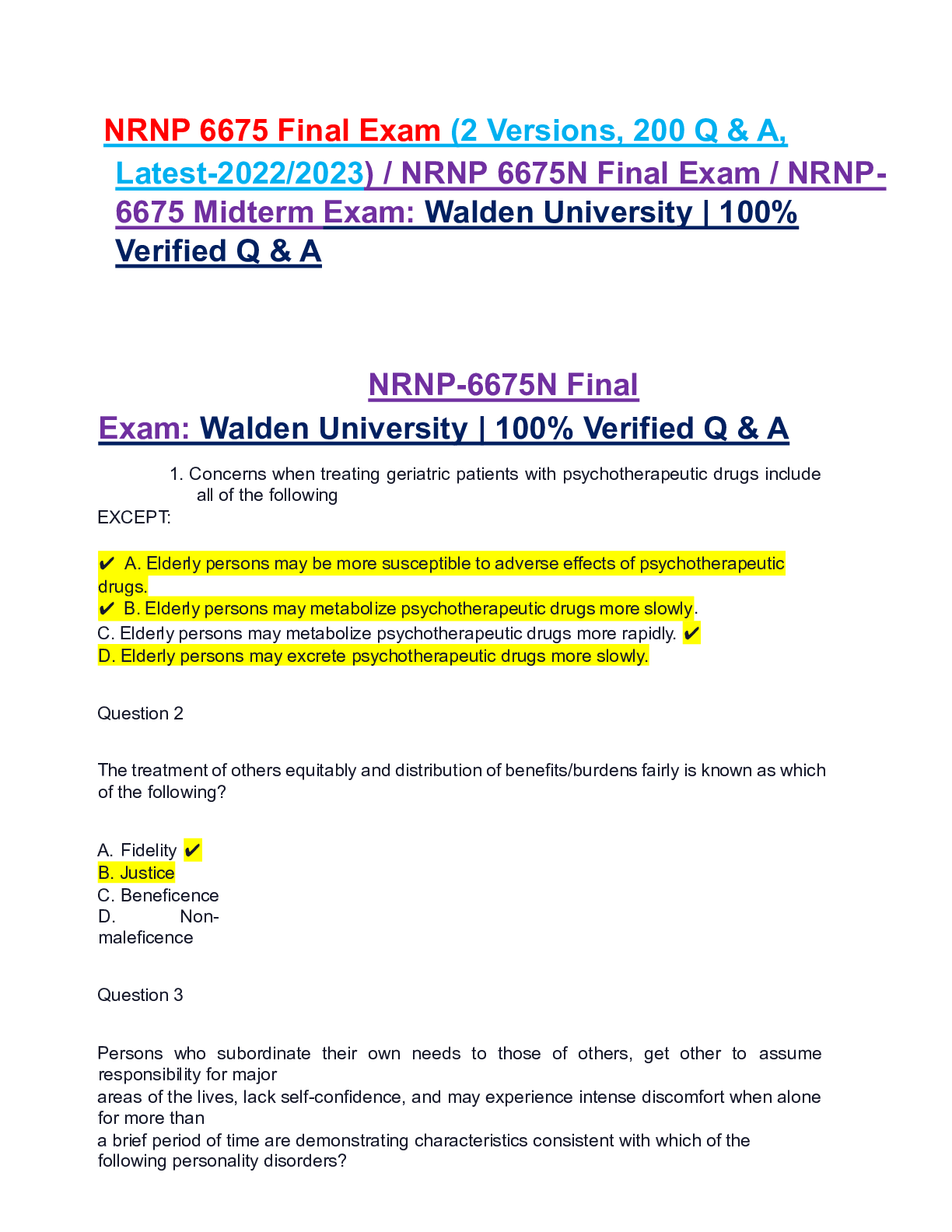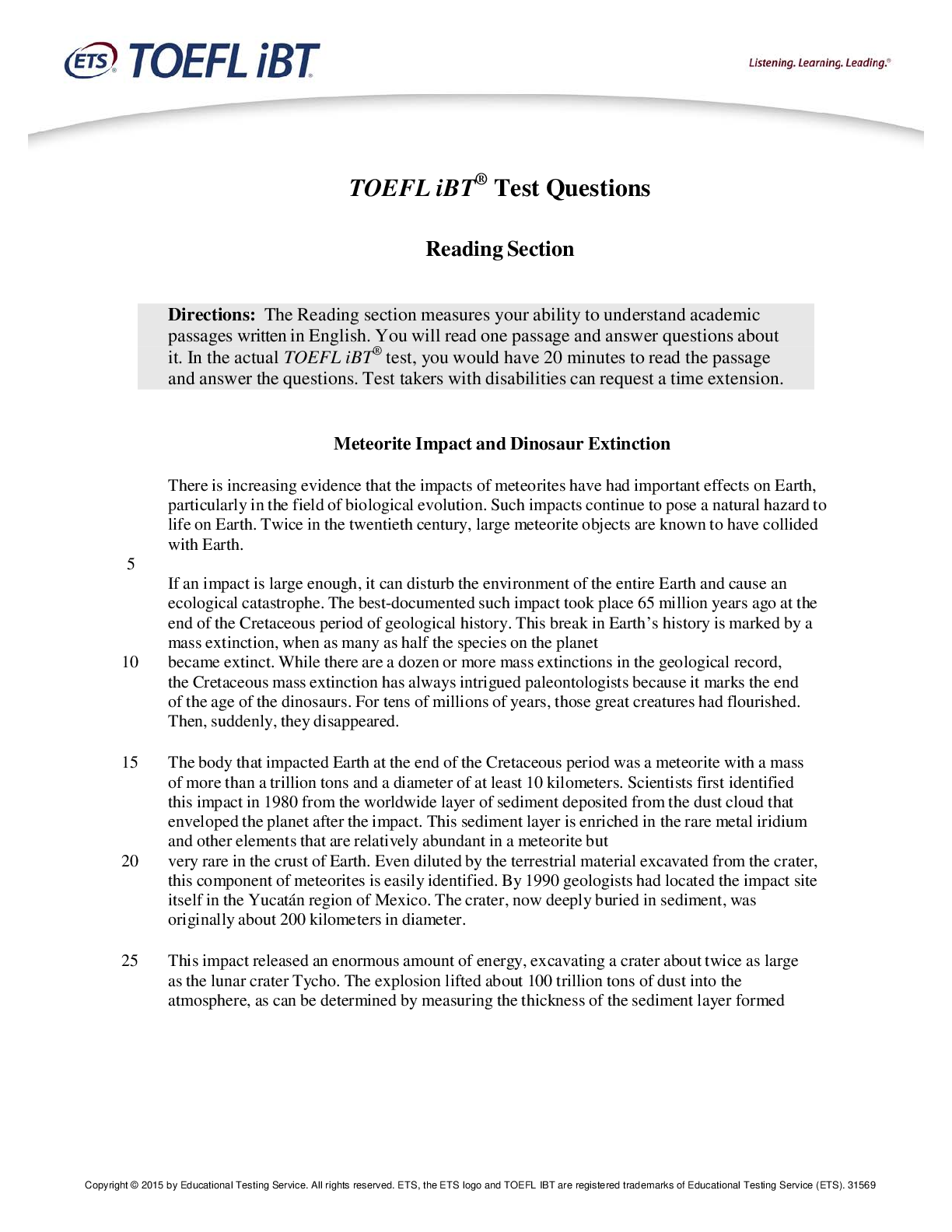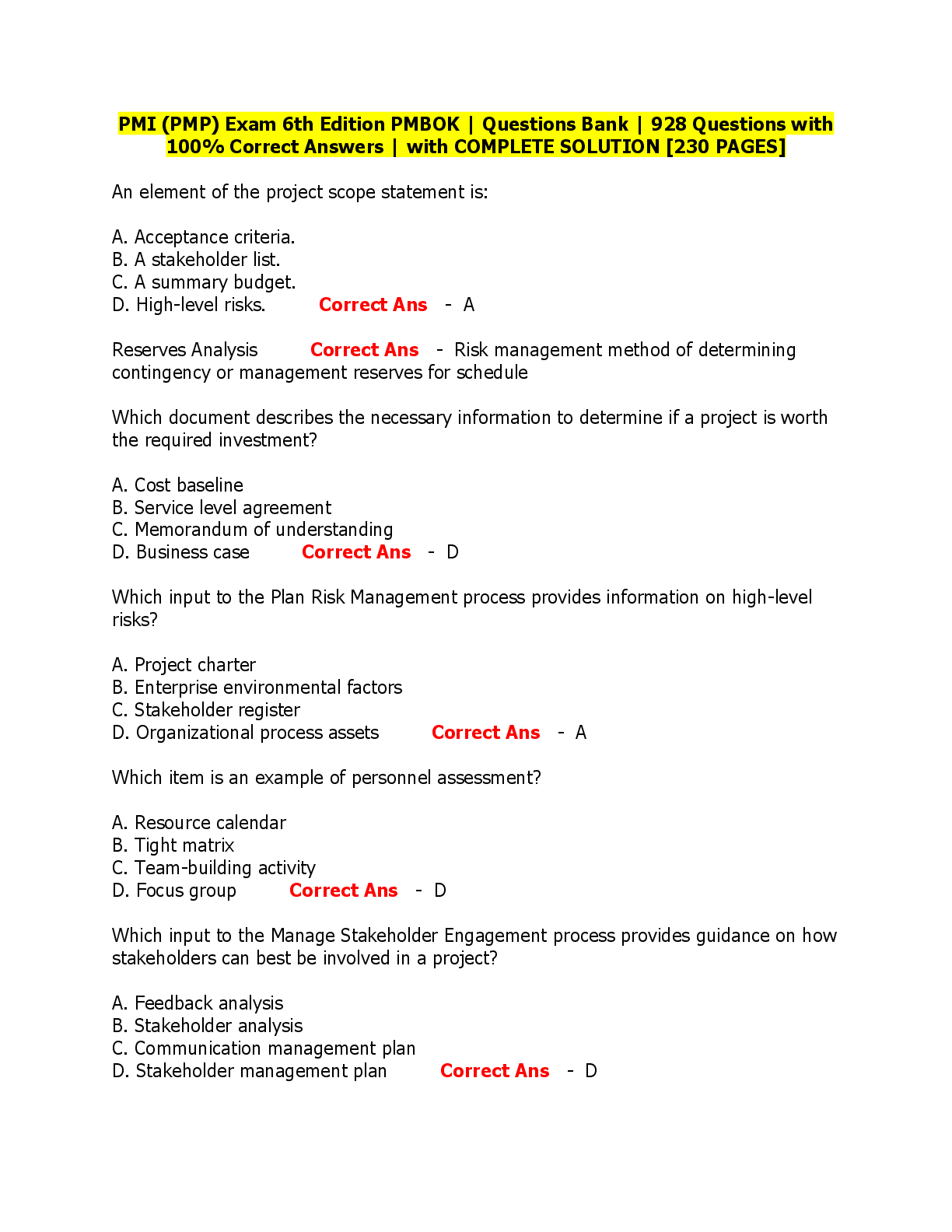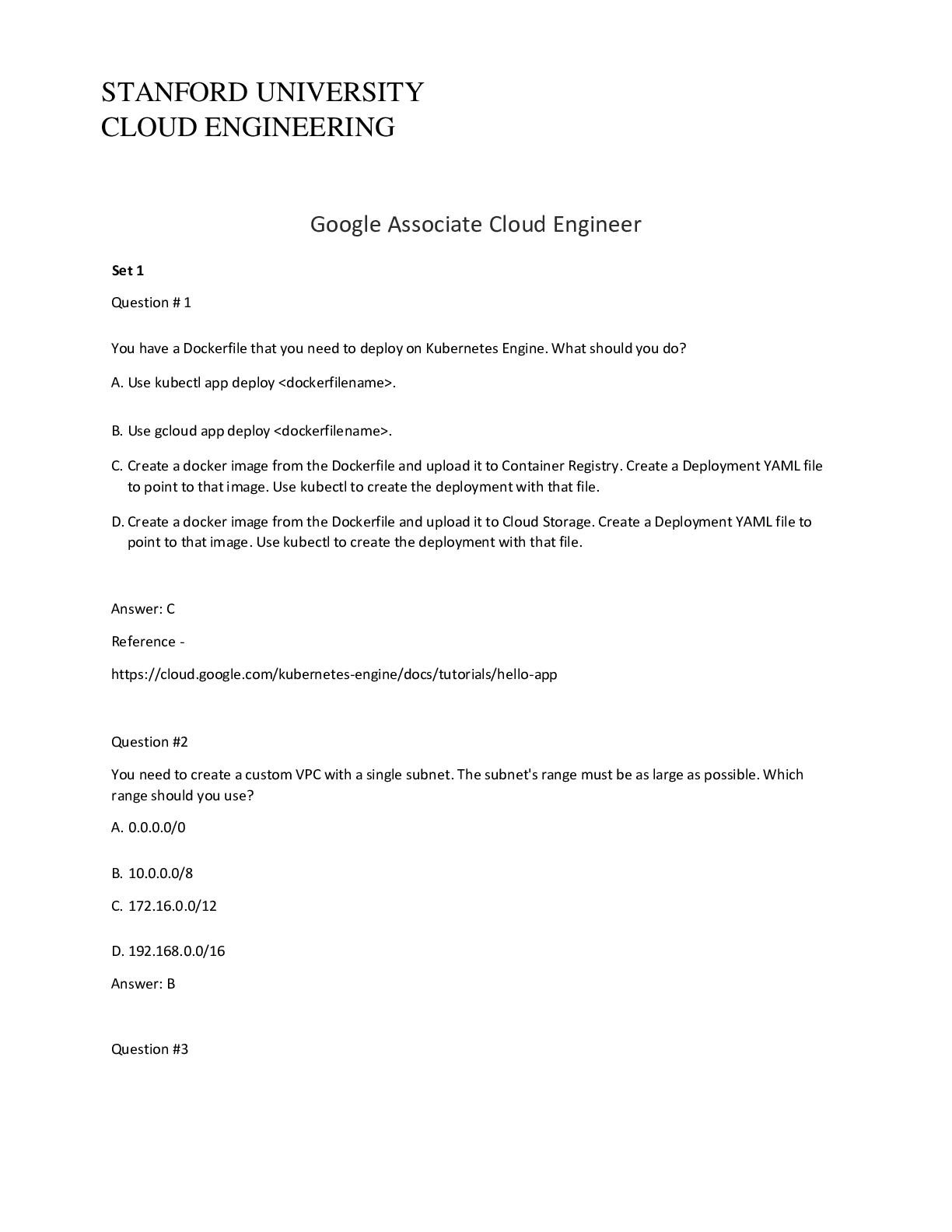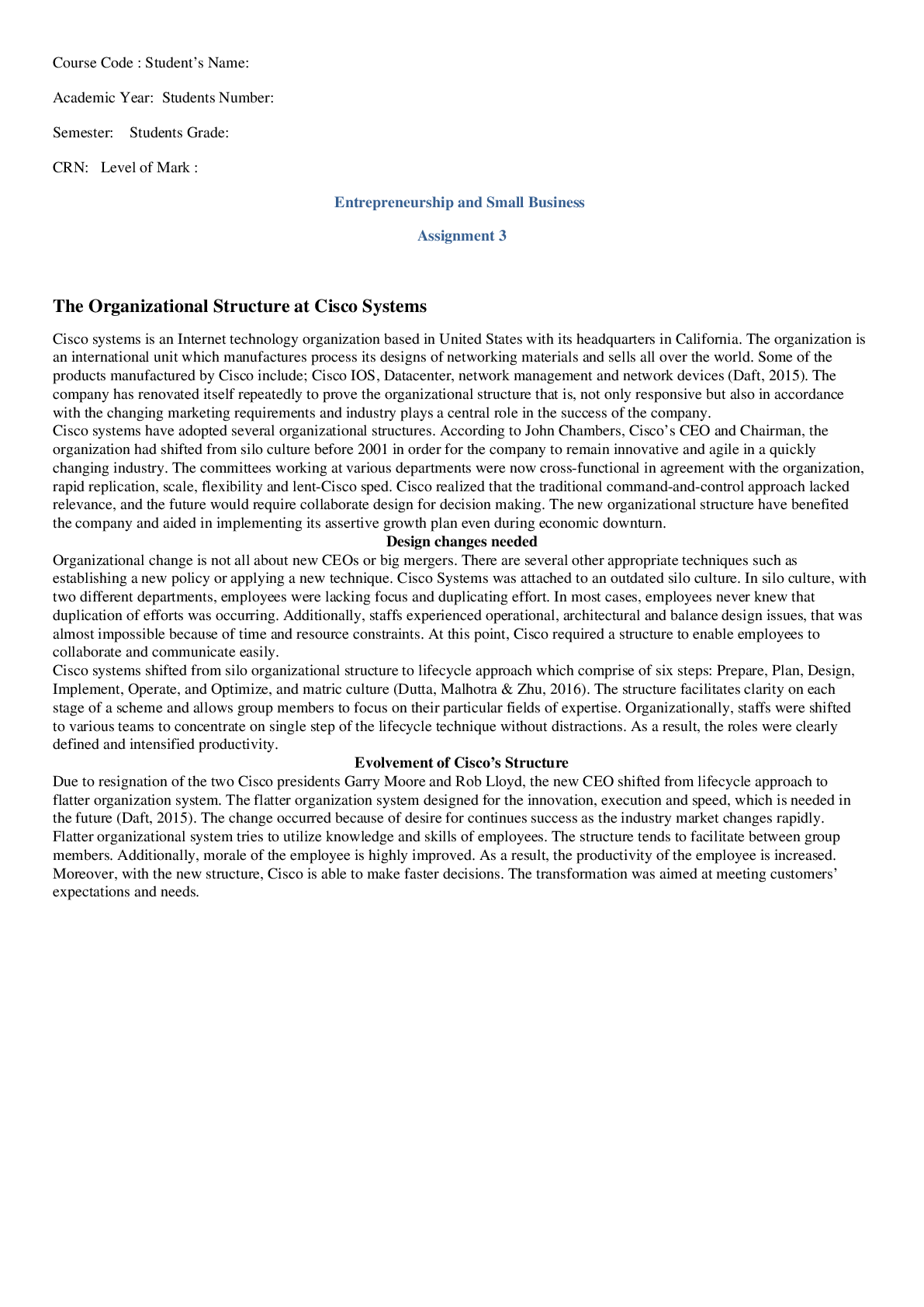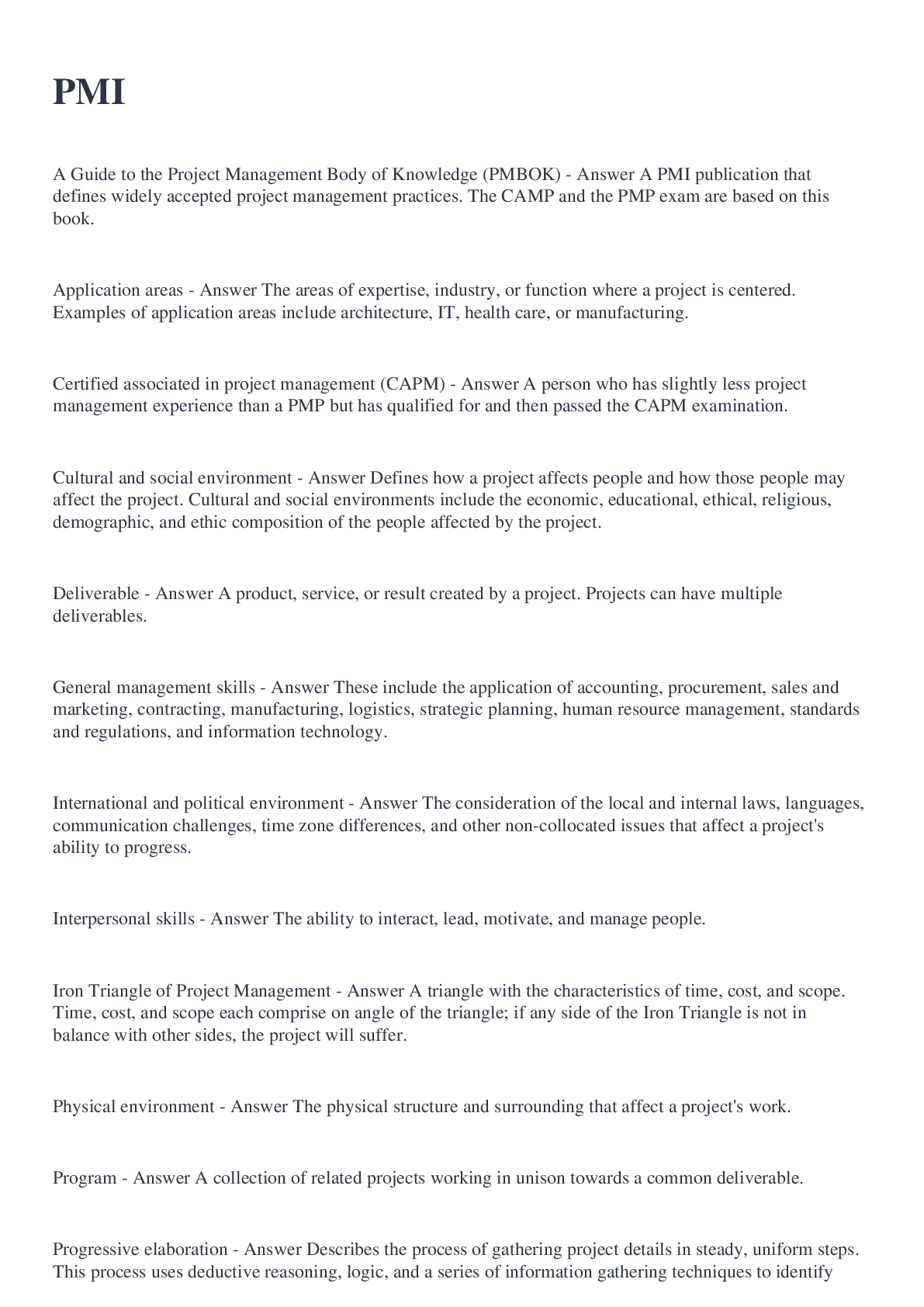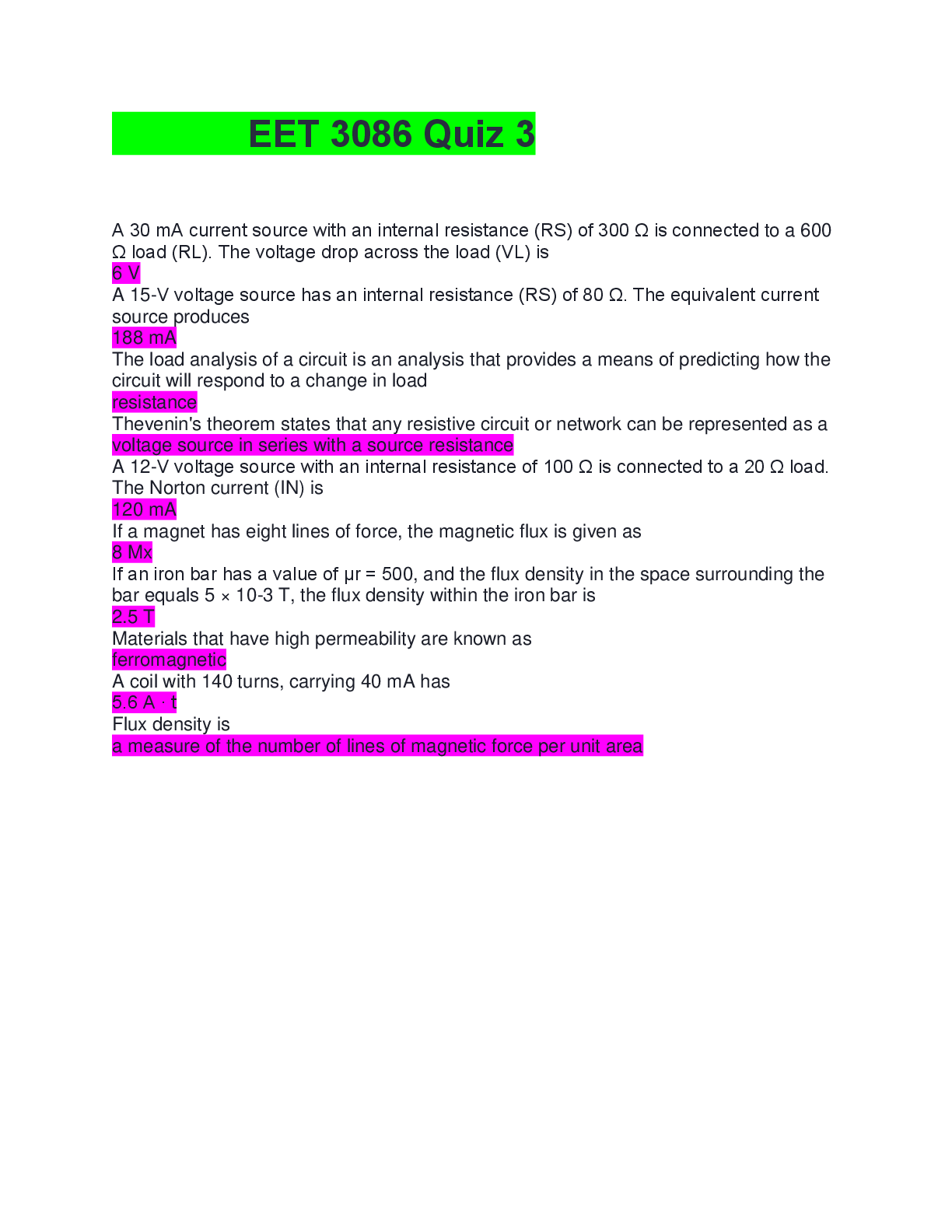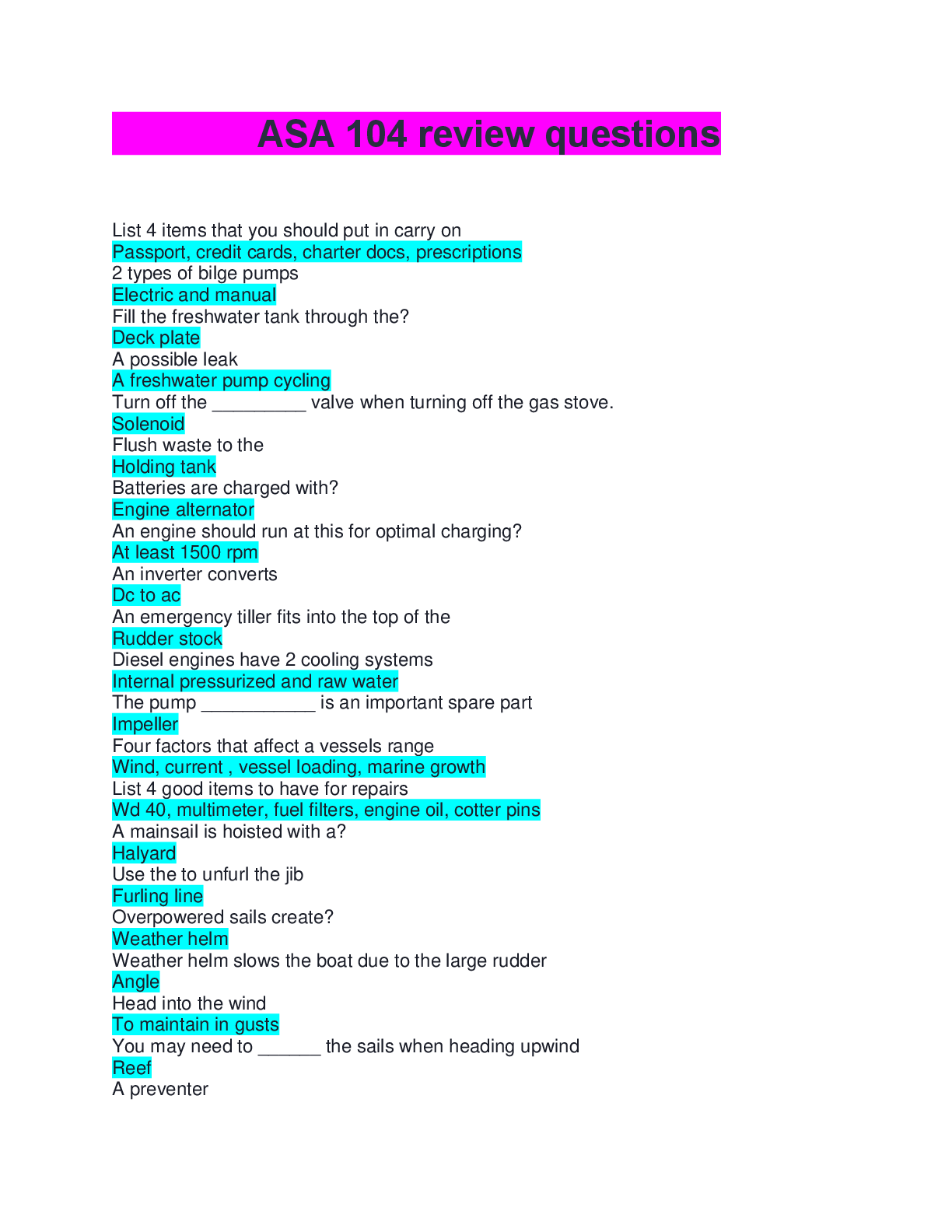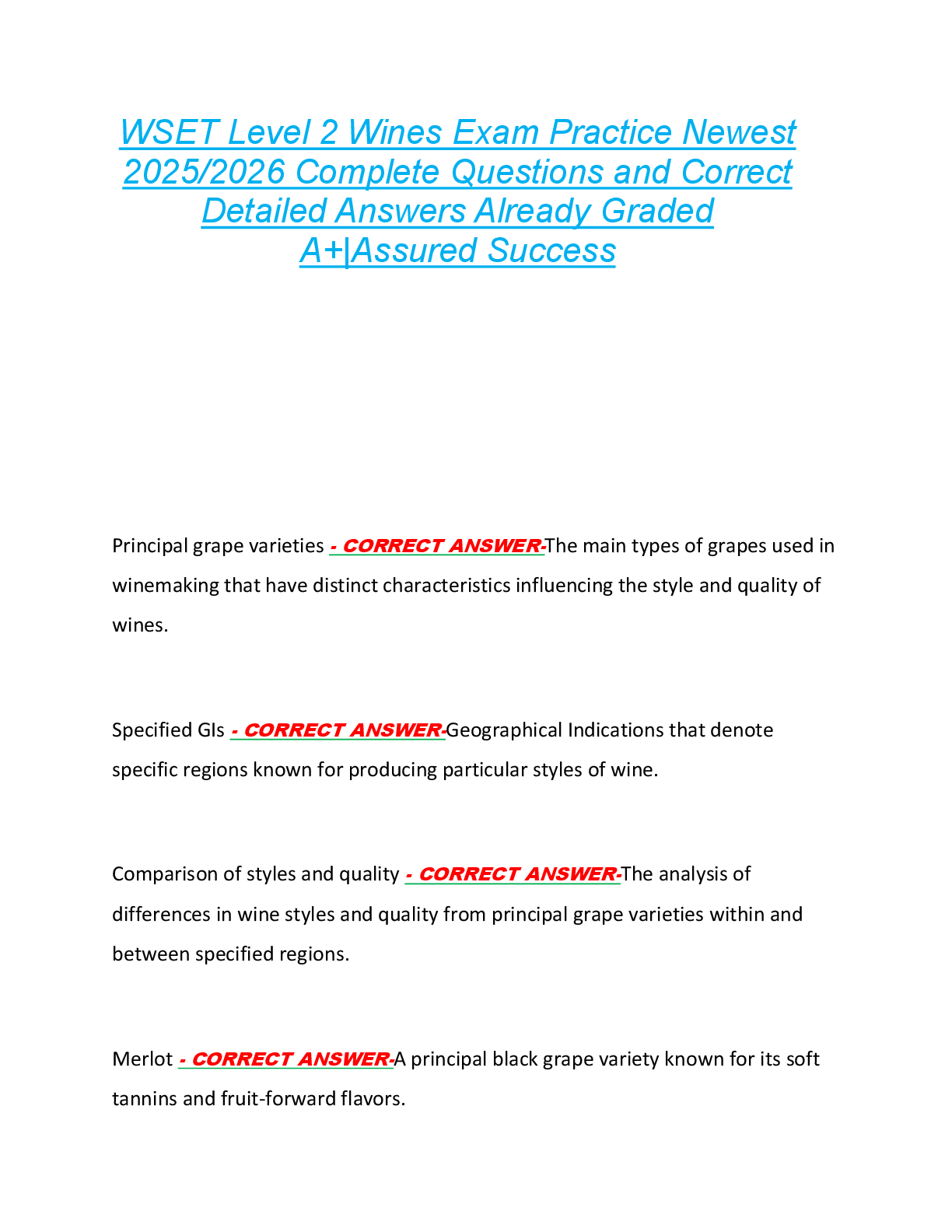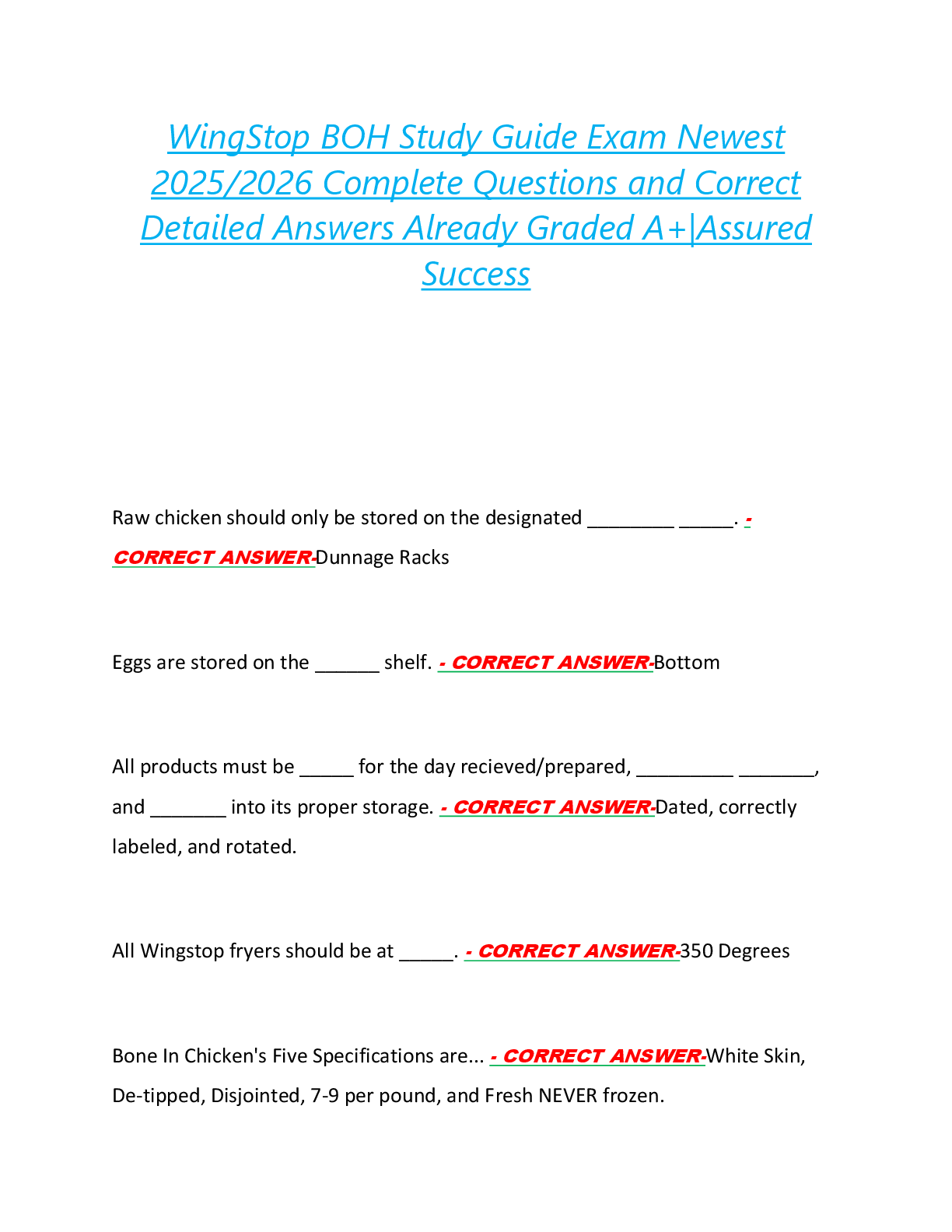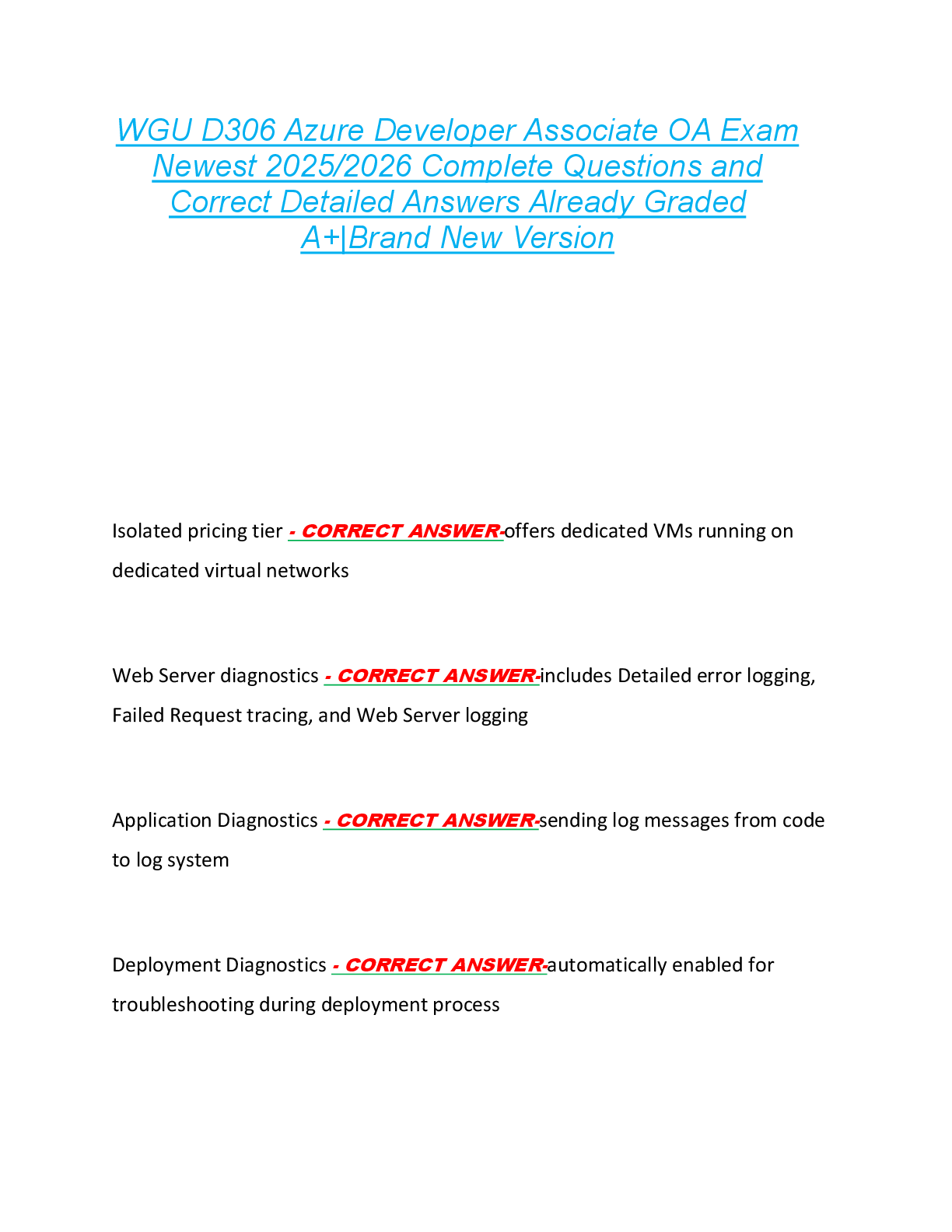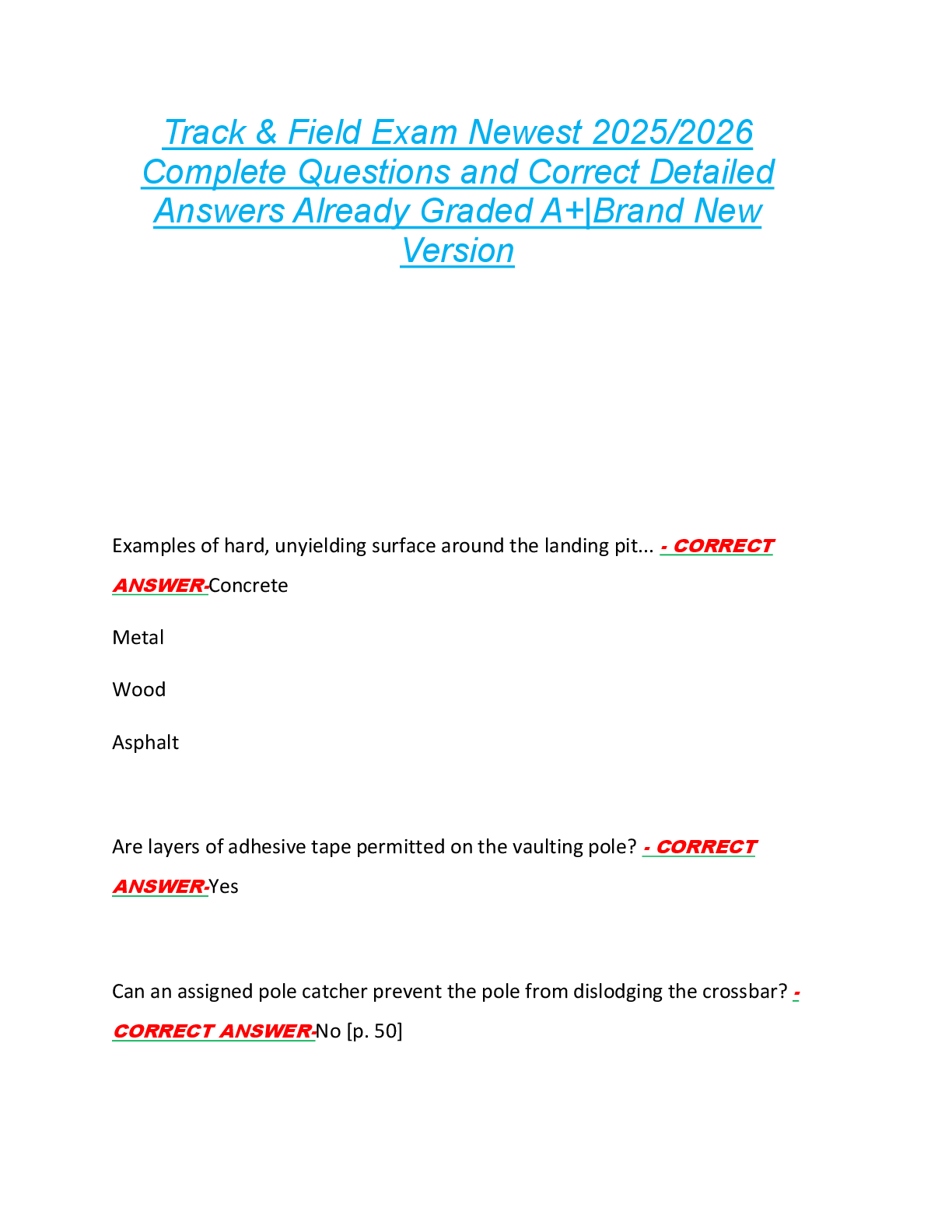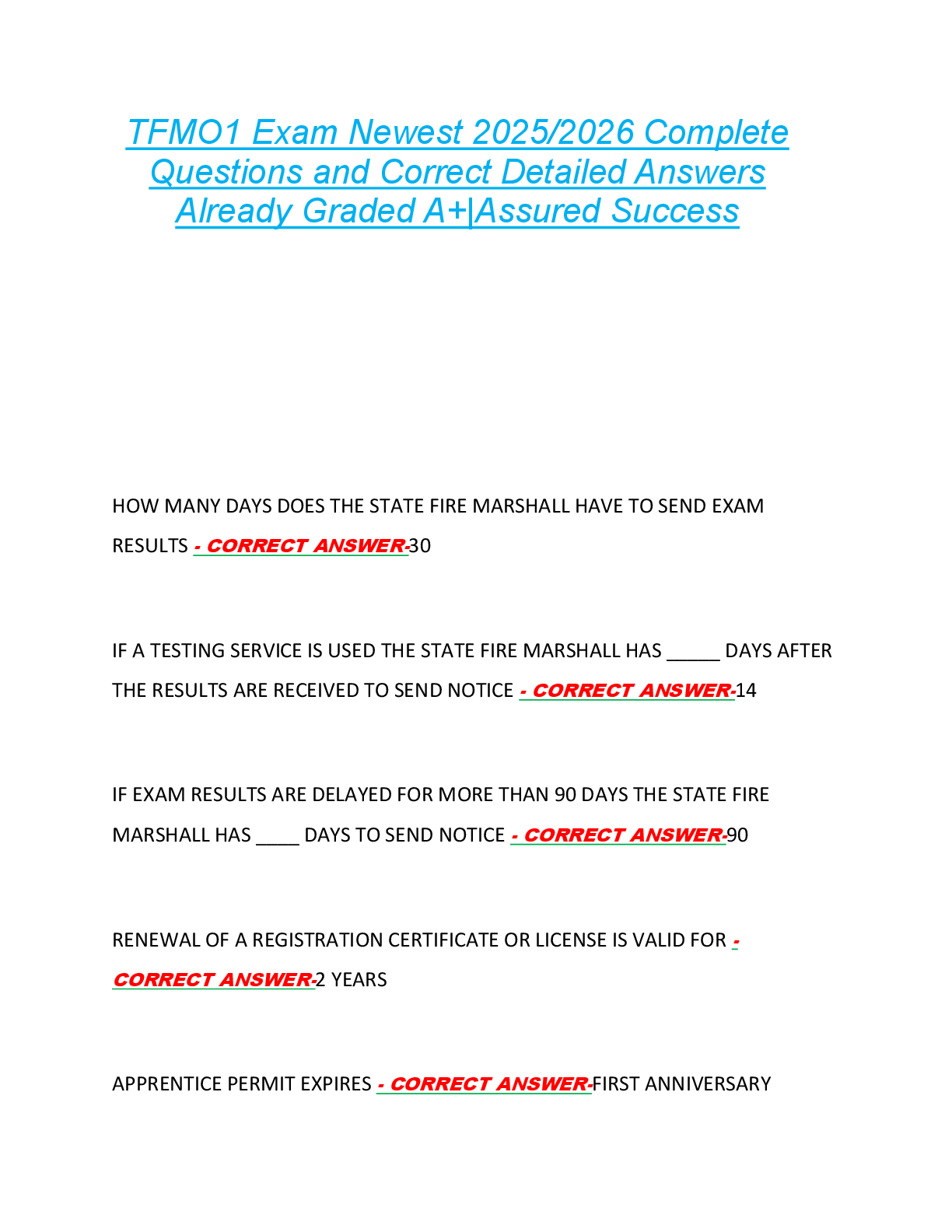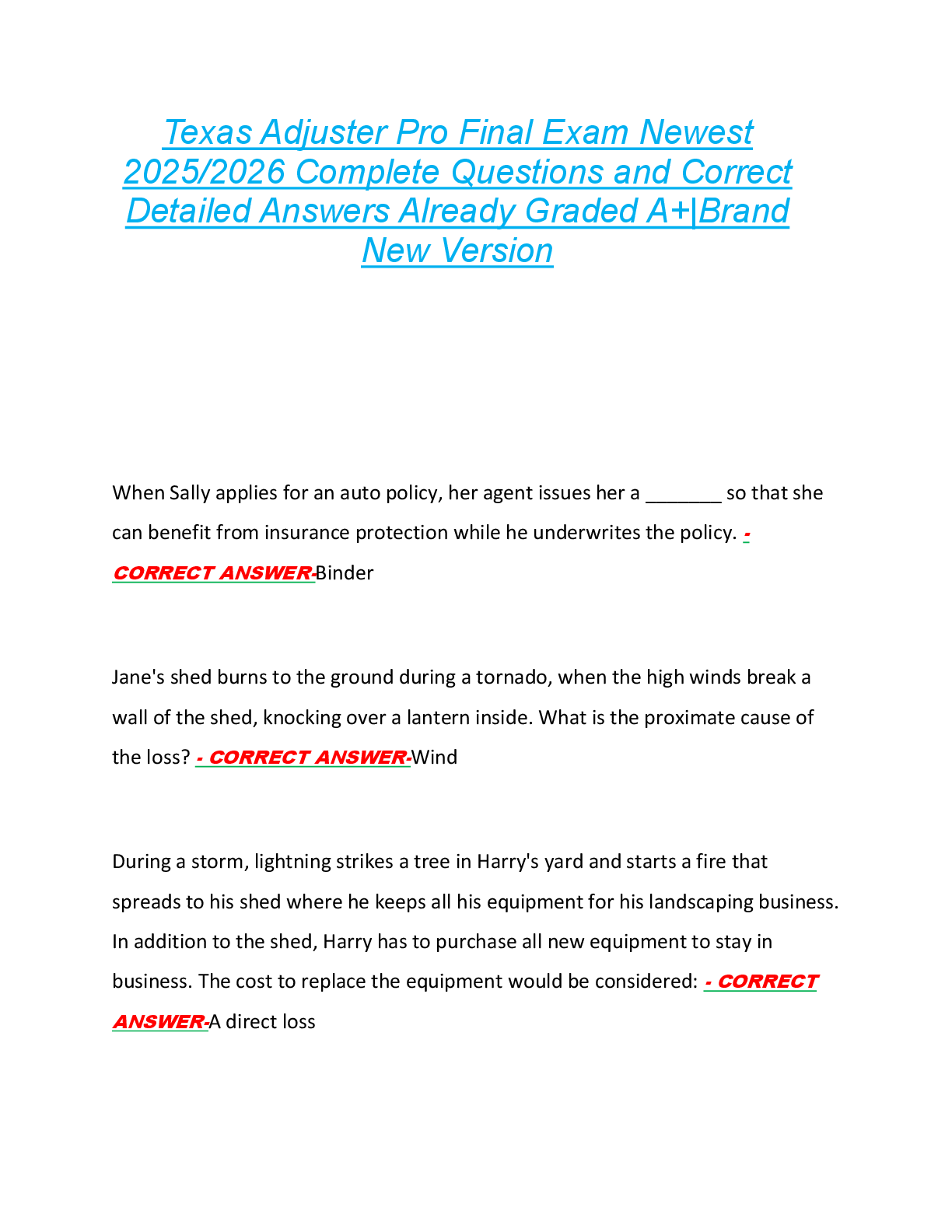Agricultural Studies > EXAM > Agricultural Facts/Fundamentals & Objective Type Questions-Answers (All)
Agricultural Facts/Fundamentals & Objective Type Questions-Answers
Document Content and Description Below
India's geographical area—32,87,263 km2; only 2·4% of World surface area of 135·79 million sq. km; provides shelter to nearly 16·7% of human & 14% of cattle of World population. ● India is ... the ‘7th’ largest country in the world. ● India lies entirely in the northern hemisphere. ● India's mainland extends between latitudes 8°4′ and 37°6′ north; longitudes 68° 7′ and 97°25′ east. ● India's length—about 3,214 km (North to South) between extreme latitudes; breadth— about 2,933 km (East to West) between extreme longitudes. ● India's land frontier—about 15,200 km. ● India's total length of coastline of mainland, Lakshadweep Islands and Andaman & Nicobar Islands—7,516·6 km. ● The Plains of the Ganga & the Indus—about 2,400 km long and 240 to 320 km broad; formed by basins of 3 rivers—Indus, Ganga & Brahmaputra. ● North-Eastern (NE) Region is called ‘ 7 Sisters’ of India, including the NE-States— Assam, Arunachal Pradesh, Nagaland, Manipur, Tripura, Mizoram and Meghalaya, later on added ‘Sikkim’. (now total 8 States). ● The Peninsular Plateau (marked–off from plains of Ganga and Indus) by a mass of mountain and hill ranges–460 to 1220 metres in height, represents Aravalli, Vindhya, Satpura, Maikala and Ajanta. ● Desertic area is in two parts–large & small; wherein large deserts–spreading from Rann of Kuchch towards north and upto Luni river; and small desert–between Jesalmer and Jodhpur, starting from Luni river upto north waste-lands. Between these two deserts, waste-lands stony soils and storage of lime, are existed. ● Contribution of Agricultural Research in total productivity growth has been as high as 48%. ● ‘Tongya’ means shifting/Jhum/Jhuming cultivation adopted in hilly and tribal areas of Bihar; besides in Myanmar. ● Agriculture, Forestry & Fisheries sector contributing in Total GDP was 16·3% (2009-10). ● India has the largest cattle population in the world; viz. 57% of total buffalo and about 16% of cows-bullocks of the world. As per 18th Indian Livestock Census (2007) total livestock population was 529 million nos, with an annual (compound) growth rate 5·88%. ● India ranks first in respect of buffaloes, second in cattle and goats, third in sheep and fifth in ducks and chickens, tenth in camel population in the world. ● About 19 million people work in livestock sector. ● During 2010-11, milk production in India was 121·8 million tonnes, ranking Ist in world. ● The contribution of livestock and fisheries sectors in total GDP during 2009-10 was 4·1%. ● The per capita per day milk availability in India is 281 g (2010-11), as against 286 g world average and minimum requirement is 211 g/day/capita. ● The per capita per day oil availability is 19 g, as against recommended oil 33 g/day/capita by medical scientists. ● As per National Forest Policy, 1988 for ecological balance, the forests-cover should be on 1/3rd area (i.e. 33%) of the country, which is only on 20·64% i.e., on 6,78,333 sq km area (i.e. 12% dense, 8% open, 0·6% mangrooves) to geographical area presently. India's forest (percentage)—1·2% in World & contributes 1·7% in GDP. ● Forest covered by density classes are; 38·3% open forest and 61·7% dense forest in India. ● High Yielding Varieties (HYV's) Programme started in—1966. ● First Agricultural Census in India conducted in—1970 and eighth census in 2003. ● Cattle Insurance Scheme started from—1974. ● 17th Livestock Census in 2003 & 18th Census 2007 were completed. 4 | Agri. G. K. ● Establishment year of various Institutions— —1970–Indian Cashew Corporation —1971–Indian Tea Trade Corporation —1972–Marine Products Export Development Corporation —1974–Indian Mica Trade Corporation —1986–Agricultural & Processed Food Products Export Development Corporation. —1998–National Agriculture Technology Project (NATP) [World Bank Funded] —1998–Kisan Credit Card Yojana started ● First Origin of India— —Hybrid Pigeonpea–ICPH-8 (ICRISAT, Hyderabad) —Hybrid Sunflower– BSH–1 (Pro-Agro) —Hybrid Cotton–H-4 (Surat Farm, Gujarat) ● During 2003–04, the increase in Agriculture and related sector for value addition was noted 9·1%, as against 1996–97—9·6% the highest obtained. ● India has Two hot spots of Bio-diversity (out of 10 in the World). i.e., Western Ghats and North-Eastern Region. ● Contribution of Agricultural Research to total productivity growth in India is 48%. ● India has nearly 8% of total plants and animals of the world. ● ICAR established the National Research Centre on Rapeseed-Mustard (NRCRM) Bharatpur (Raj.) on October 20, 1993 to carry-out basic, strategic and applied research on rapeseed-mustard & now Directorate of Rapeseed-Mustard (DRMR) w.e.f. 1-4-09. ● All India Co-ordinated Research Project on Oilseeds (AICRPO) was established in April, 1967 for the improvement of oilseeds in the country ,with its H.Q. Hyderabad. ● India's Revolution (achieved) in Agriculture Sector & related fields— Revolution Related Sector ● Green Revolution (1966–67) Foodgrains Production (especially Wheat/Rice) ● White Revolution Milk Production ● Yellow Revolution Oilseed Production ● Grey Revolution Fertilizer Production ● Blue Revolution Fish Production ● Red Revolution Meat/Tomato Production ● Round Revolution Potato Production ● Silver Revolution Egg Production /Poultry ● Pink Revolution Prawn Fish Production ● Golden Revolution Fruit Production (Apple) ● Brown Revolution Non-Conventional Energy Sources ● Green Revolution—The term Green Revolution was first used in 1968 by former USAID (United States Agency for International Development-Director William S. Gaud (died in 1977). William S. Gaud— appointed as executive Vice-President in IFC on 1 October 1969. ● Need of Revolution in Future in India (i) Black Revolution Bio-diesel Production for self sufficiency in Petroleum & Mineral Oil. (ii) Food— Chain Revolution— Mandate To double the average income of Indian farmers by 2010. ● India needs a ‘New Revolution’/Second Green Revolution to capitalize on the gains provided by the ‘Green & White Revolutions’. ● This New Revolution in the food sector should aim at reducing the wastage of foodgrains, fruits and vegetables worth thousands of crore each year. (iii) Rainbow (Satrangi i.e. ‘BIVYGOR’) Revolution—This can be achieved through taking altogether the above Revolutions in future. ● Father of India's ‘Green Revolution’ in Agriculture—Dr. M.S. Swaminathan (Monkombu Sakbasivan Swaminathan)—Ex. DG (ICAR) observed this revolution from 1966- 67 & continued upto 1976-77 in wheat and rice. ● Nobel Peace Prize (1970) for ‘Green Revolution’ awarded to U.S. Scientist Nobel Laureate Dr. N. E., Borlaug (Norman Earnest Borlaug) (only Nobel-Laureate in Agric in the World)—death 12 September, 2009 (95 years age). ● ‘White Revolution’ (Milk Production) through ‘Operational Flood’ I Step—1970– 81, II Step—1981–85 and III Step—1985–96 (completed in April 1996) ● ‘Father of White Revolution’—(Late) Dr. Vergese Kurien (1921-2012) First-Director Chairman, NDDB, Anand (Gujarat) Padma Vibhushan, Magsaysay Award and World Food Prize awarded. (born 26 November, 1921 death 9 September, 2012, 91 years live) ● Chairperson of ‘NDDB’ (est. 1965) is now Dr. (Ms) Amrita Patel w.e.f. 1998. Agri. G. K. | 5 ● On March, 1998; Dairy Co-operative Societies–77,531; 9·8 million farmer members & 170 Milk-sheds in the country. ● First Director General (DG) of ICAR—Dr. B.P. Pal (Benjamin Pyare Pal); and presently (in 2010)–S. Ayyappan. ● In India, per capita availability of Agricultural use land—0·30 hectare. ● Per agriculture family—land available–4·5 acre (nearly 1·8 hectare). ● ‘AGMARK’—According to ‘Agriculture Production Act–1937’–AGMARK is used as a National Mark to express the quality and purity of Agriculture and Animal products. ● A new scheme ‘NAIS—National Agriculture Insurance Scheme’ has been started w.e.f. Rabi 1999–2000 in place of CCIS (Comprehensive Crop Insurance Scheme). ● India's population (Census 2011)- 1,210,193,422 (Annual growth rate about 1·76%). ● In India, the NPK nutrients ratio, being used in agriculture; in year 2009–10, it was 4·3 : 2·0 : 1, as against the ideal ratio of N : P : K 4 : 2 : 1 in cereals however, it was 9·5 : 3·2 : 1 (at decontrolled on fertilizers) in the year 1992–93. ● ‘Loknayak Jai Prakash Narain Nidhi’ (Fund) was declared to formulate on Feb. 2004, which will take the place of existing RIDF (Rural Infra-Structure Development Fund); and has started w.e.f. 17 Feb, 2004 by giving some funds. ● The ‘Seed Act–1966’ has been modified into seeds Bill, 2004. ● Animal Husbandry and Dairying Sector—(i ) Percentage / number in India of the World → 16·5% Cattle, → 56·5% Buffalo, → 17·7% Goat, → 5·5% Sheep and → 2·7% Poultry (ii) In India, nearly 10% family engaged in Animal Husbandry and Dairying Sector i.e., one person in each family; say–about 19 million persons employed. (iii) Contribution of Animal Husbandry Dairying & Fisheries Sector in G.D.P (Gross Domestic Products)—4·1%; (during 2009-10) with 14·9 million workers engaged in rural area. (iv) Women constitute 71% of labour force in livestock farming. In dairying, 75 million women engaged, as against 19 million people. (v) India’s diversified food consumption basket-non-foodgrain items-milk, meat, egg and fish. ● Causes of pungency/bitterness/colour in Fruits and Vegetables. ● Causes of pungency/bitterness Symptoms Causes ● Aonla (Phyllanthus emblica) —(Sourness) —Tenin/Galic acid/Ilogic acid/polyphenol ● Arbi (Colocasia) —(Acridity/bitterness) —Calcium Oxalate ● Badam (Almond) —(Bitterness) —Emyladin ● Bael —(Liquidification) —Marmelosin ● Bittergourd —(Bitterness) —Memordicocide ● Chilli —(Pungency) —(Red Colour) —Capsaicin —Capcyanthin ● Cucumber —(Bitterness) —Cucurbitacin ● Carrot —(Yellow colour) —(Orange colour) —Anthocyanin —Carotin ● Garlic —(Pungency) ● Uncrushed ● Crushed ● Fresh —Allinase, Amino acid —Alicin —Alyl radical di-sulphide (smell) [Show More]
Last updated: 2 years ago
Preview 1 out of 150 pages

Buy this document to get the full access instantly
Instant Download Access after purchase
Buy NowInstant download
We Accept:

Also available in bundle (1)
Click Below to Access Bundle(s)

ICAR JRF, BHU, Pre PG, AFO, IFFCO, CCI, NSC, AO, AAO, etc. All Competitive exams/HAND BOOK ON GENERAL AGRICULTURE (ICAR – JRF and Other Competitive Examinations)/General Agriculture for JRF & SRF-2018
ICAR JRF, BHU, Pre PG, AFO, IFFCO, CCI, NSC, AO, AAO, etc. All Competitive exams/HAND BOOK ON GENERAL AGRICULTURE (ICAR – JRF and Other Competitive Examinations)/General Agriculture for JRF & SRF-2018
By EXCELLENCE NURSING LIBRARY 2 years ago
$74
4
Reviews( 0 )
$27.50
Can't find what you want? Try our AI powered Search
Document information
Connected school, study & course
About the document
Uploaded On
Nov 17, 2023
Number of pages
150
Written in
All
Additional information
This document has been written for:
Uploaded
Nov 17, 2023
Downloads
0
Views
80

